30 of the world's most ancient monuments
The roots of human civilisation
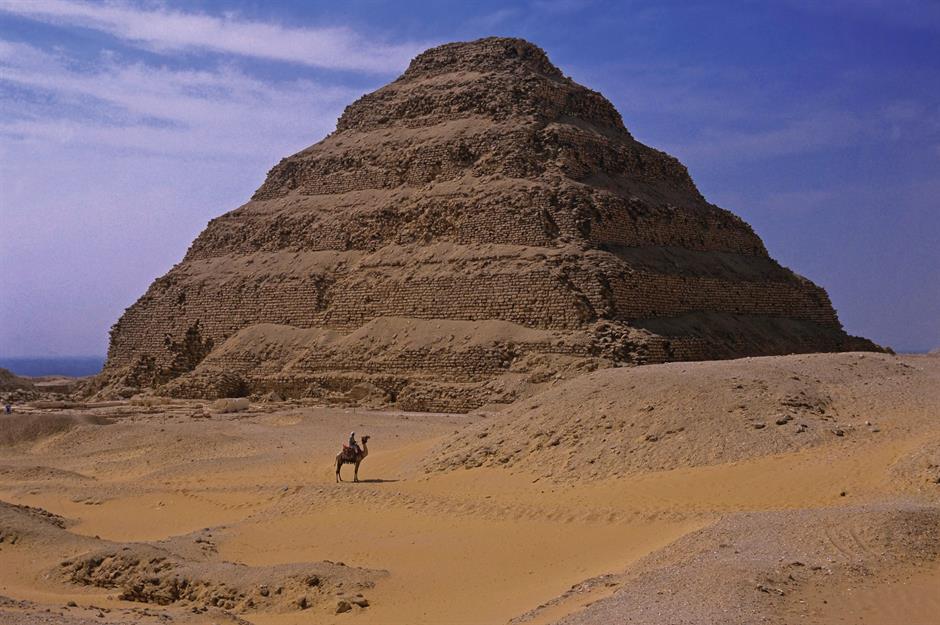
The oldest monuments that still survive around the world offer archaeologists and historians rare insights into the development of early civilisations. The identity of the people who made them and their purposes may have been lost to time, but they remain as monuments to everyday life and death, and humankind’s move from hunter-gatherers to settlement.
Click through the gallery to discover 30 of the world's most ancient structures, from burial mounds to cities, presented from 'newest' to oldest…
c2000 BC: Megalithic Monuments of Alcalar, Portugal
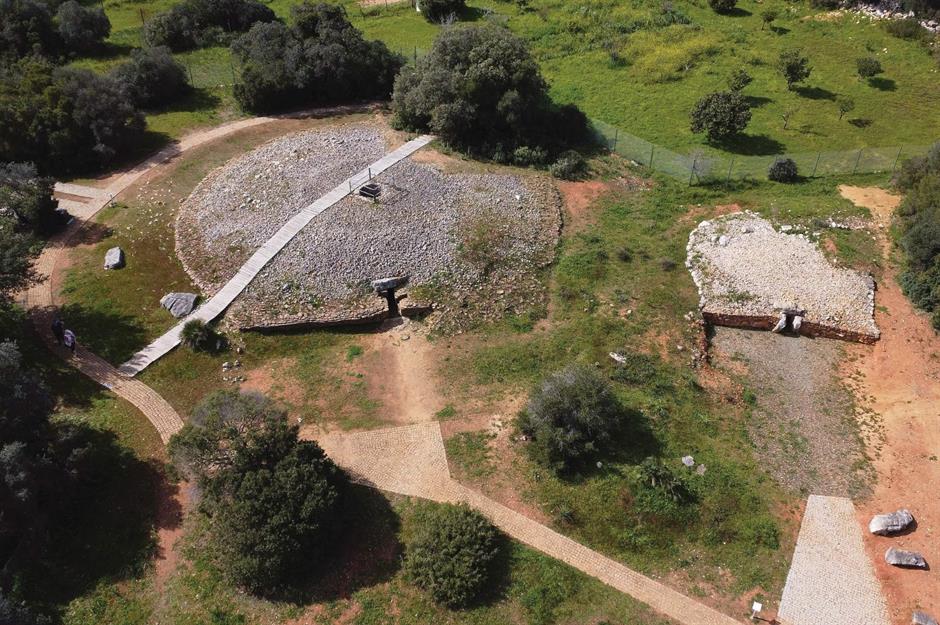
On top of a hillside near the town of Portimao is a group of 18 burial mounds that form a necropolis from the Chalcolithic era, around the turn of the third millennium BC. A settlement thrived there and built megalithic monuments out of the local limestone – at the site today, visitors will see a lime kiln added in the 19th century to exploit the natural resources there. At the centre of the necropolis is Tholos 7, with a diameter of 89 feet (27m).
2100 BC: Ziggurat of Ur, Iraq
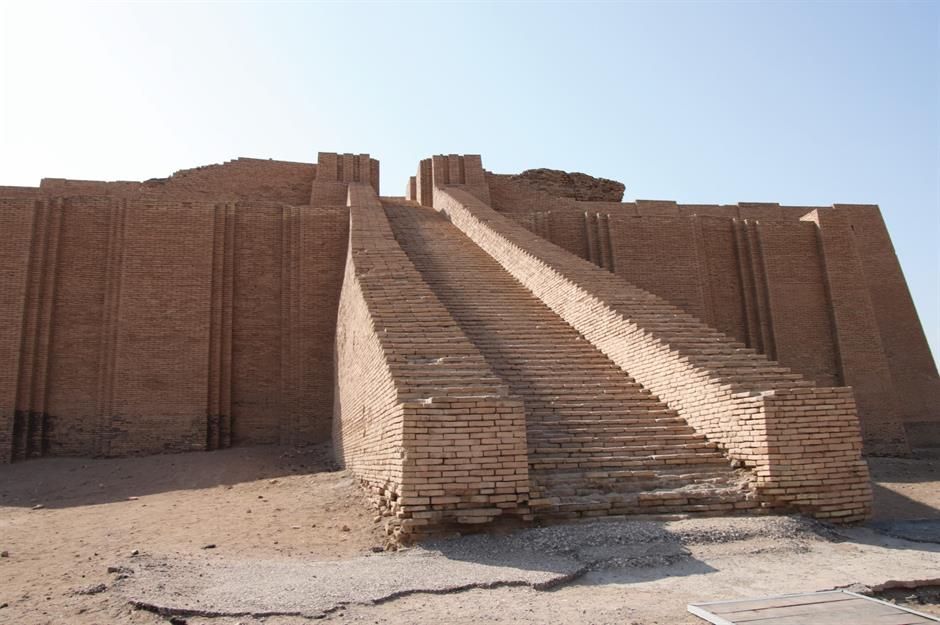
In the ancient city of Ur in southern Iraq is a well-preserved ziggurat (a pyramidal stepped temple tower) from the Neo-Sumerians who rose to power in ancient Mesopotamia – or, at least, two levels of it. Built with millions of bricks made from mud and reeds, many of which were stamped with the name of Ur-Nammu, the first king of the Third Dynasty of Ur, the structure originally had three tiers leading to a temple on top, before four more levels were added in the sixth century BC.
2500 BC: Mohenjo-Daro, Pakistan
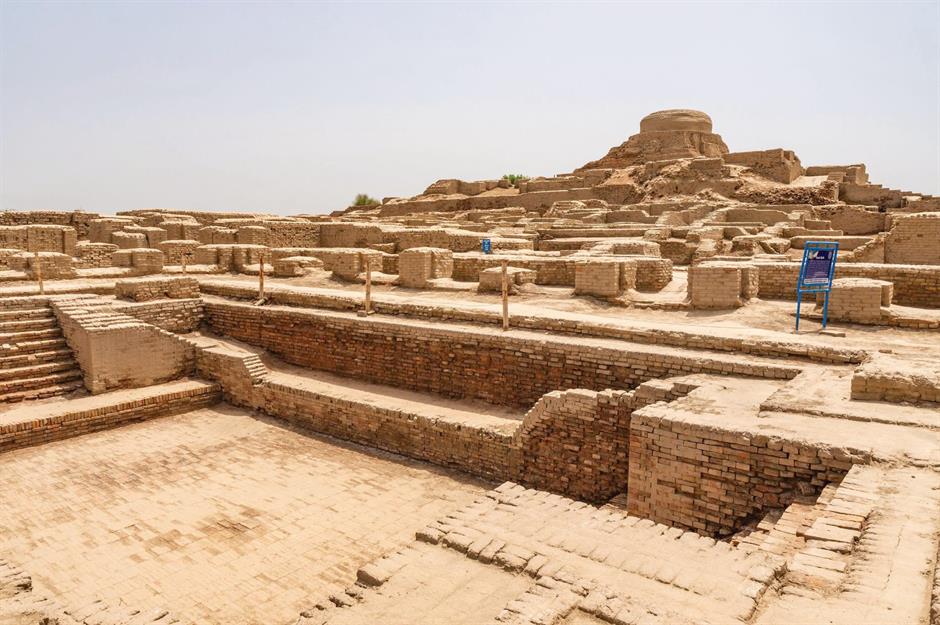
The Indus Valley is one of the cradles of civilisation and once it and its people had emerged, several forerunners of the city sprang up, such as Harappa and Mohenjo-Daro in modern-day Pakistan. The latter, built around 2500 BC on the banks of the Indus River, had a population in the tens of thousands living in the Lower City, while the upper section, the Citadel, featured public baths, assembly halls and a large granary. With hundreds of wells and a degree of plumbing, the water management of Mohenjo-Daro was unprecedented for the time.
Love this? Follow our Facebook page for more archaeology features and travel inspiration
c2600 BC: Step Pyramid of Djoser, Egypt
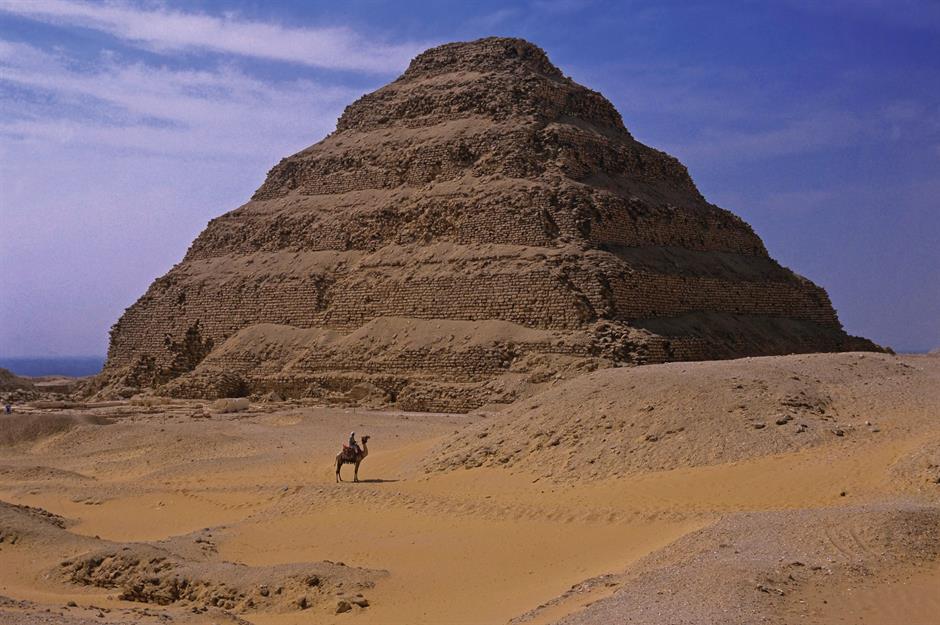
While the Pyramids of Giza are undoubtedly more visited, butting up against the metropolis of Cairo, around 20 miles (32km) away stands the oldest of Egypt’s most iconic structures. Part of an immense mortuary complex in Saqqara, the necropolis of the ancient capital of Memphis, the Step Pyramid was built in the 27th century BC for the Third Dynasty pharaoh Djoser, and designed by his chief minister Imhotep. Tombs were no longer to be hidden: here was a clear and lasting display of pharaonic power, six tiers and 200 feet tall (61m).
c2700 BC: Shunet El Zebib, Egypt
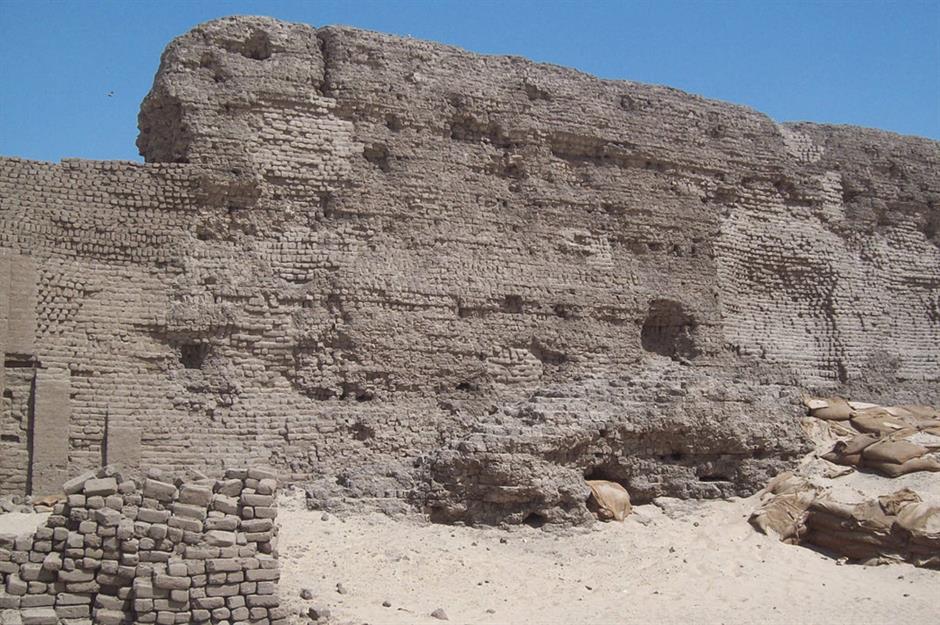
Older than all the pyramids in Egypt, and in many cases larger, is a mud brick edifice at Abydos dating to the reign of Second Dynasty pharaoh Khasekhemwy. The two concentric rectangular walls of Shunet El Zebib are so vast – measuring 449 by 235 feet (137x77m) and 404 by 184 feet (123x56m) respectively – that for years many believed it could only have been a fortress. Instead, it was a funerary enclosure, where rulers could still be worshipped after death. Unfortunately, the walls face a constant risk to this day: not only from the elements, but also local hornets burrowing into the brickwork.
3000 BC: Dholavira, India
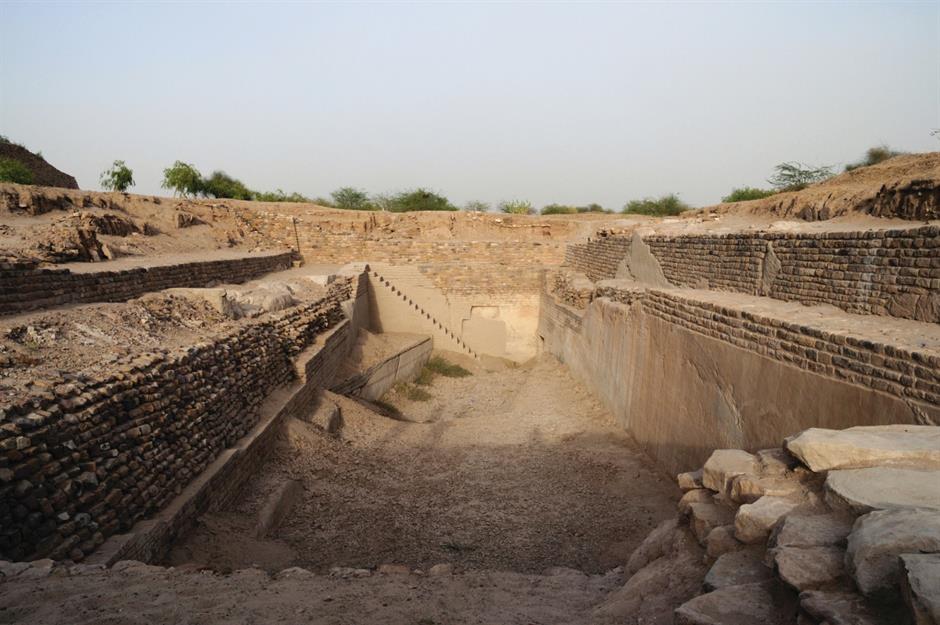
The most notable Indus Valley Civilisation site in India, Dholavira was half fortified city, half cemetery. Located on an island in the midst of the salt marshes of Gujarat, it boasted a sophisticated water management system by using reservoirs to make the most of the limited supply in the environment. In the layout of the buildings in neat, grid patterns, split by size and grandeur, it is possible to see an early attempt at both urban planning and social order.
3000 BC: Stonehenge, England
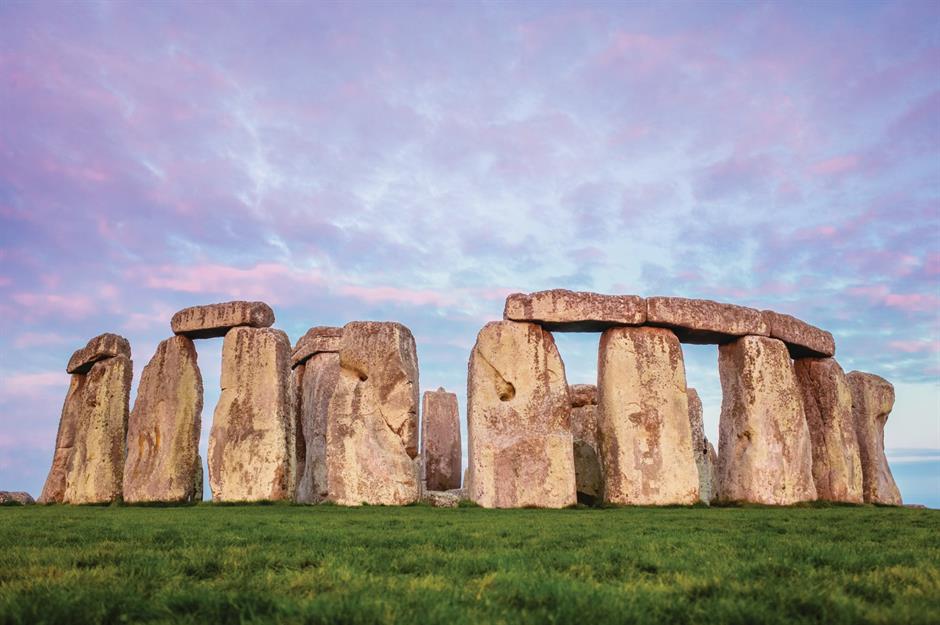
On Salisbury Plain is one of the most famous ancient landmarks in the world: Stonehenge. The first incarnation of the iconic stone circles emerged around 3000 BC, although it remains something of a mystery who built it and why (its longstanding association with the Druids doesn’t mean they were responsible). Equally, the purpose of the standing stones – some of which came from south Wales over 150 miles (241km) away – has been debated for centuries. Was it an early observatory, a place of worship, or the ceremonial centrepiece of a burial ground?
3200 BC: Bandurria, Peru
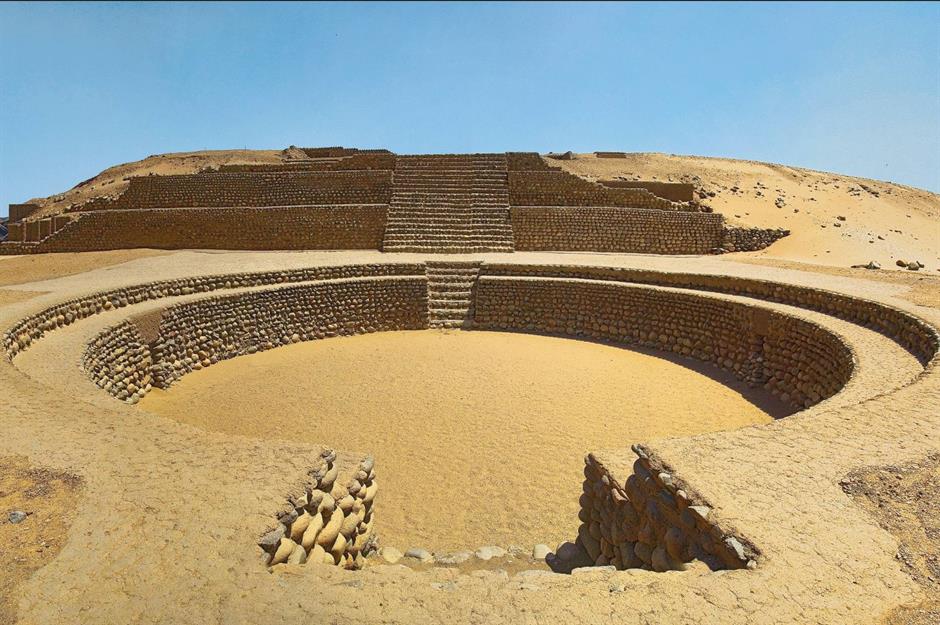
The Norte Chico civilisation, which flourished in parts of modern-day Peru in the fourth and third millenniums BC, built pyramids before the Egyptians and amphitheatres before the Greeks. The capital of Caral is often called the oldest city on the continent, but further findings and research have pointed to another Norte Chicosettlement – also known as Caral-Supe – as dating back further. Dating to 3200 BC, Bandurria has two huge platforms and sunken plazas, as were common for the culture, although much was destroyed by a mishandled irrigation project in the 1970s.
3200 BC: Skara Brae, Scotland
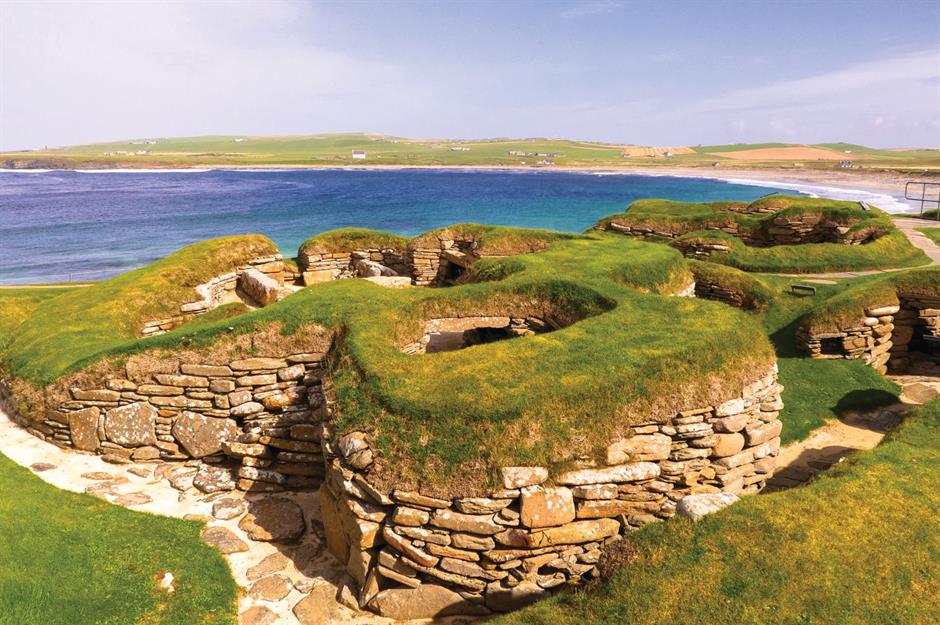
Now a popular tourist attraction celebrated as the best-preserved Neolithic settlement in western Europe, Skara Brae had been hidden under sand dunes for centuries before finally being revealed to the world again in 1850 during a fierce storm. Radiocarbon dating suggests that the settlement – a cluster of houses, each with beds, hearths and even drainage – was inhabited as early as 3200 BC. Today, visitors can see the surviving buildings, which include the original stone furniture, and the many artefacts discovered in them, such as tools, jewellery and gaming dice.
c3300 BC: Hulbjerg Passage Grave, Denmark
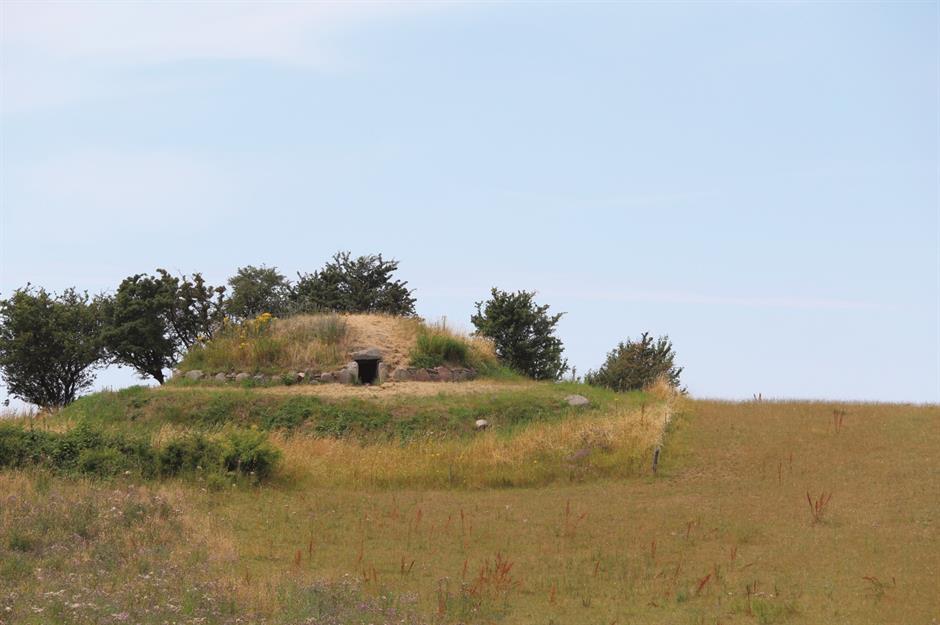
The remains of at least 53 people, including children, were found at the round stone barrow on top of Hulbjerg hill, on the Danish island of Langeland. It’s clear that beginning around 3300 BC the burial mound was used over a long period of time by the Funnelbeaker culture, early farmers of northern Europe. A surprising find was made on one of the skulls inside the chamber: a tooth with signs of treatment by a flint drill, making it the earliest-known evidence for dentistry anywhere in Europe.
c3300 BC: Loughcrew cairns, Ireland
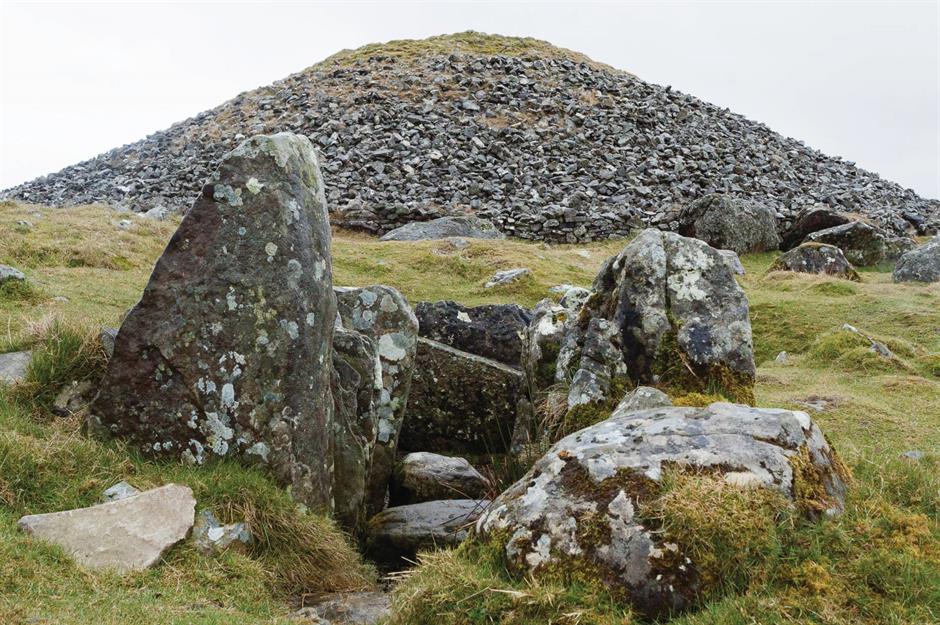
More than 20 tombs from the fourth millennium BC dot the landscape near Oldcastle in County Meath. In fact, so prominent are they that the whole area of hills and ancient burials has long been called Slieve na Calliagh, or the Mountains of the Witch, after a hag of Irish folklore. The tombs contain cross-shaped chambers and some are decorated with rare examples of megalithic art, mostly abstract engravings of circles, lines and leaf-like shapes.
c3500 BC: Listoghil, Ireland
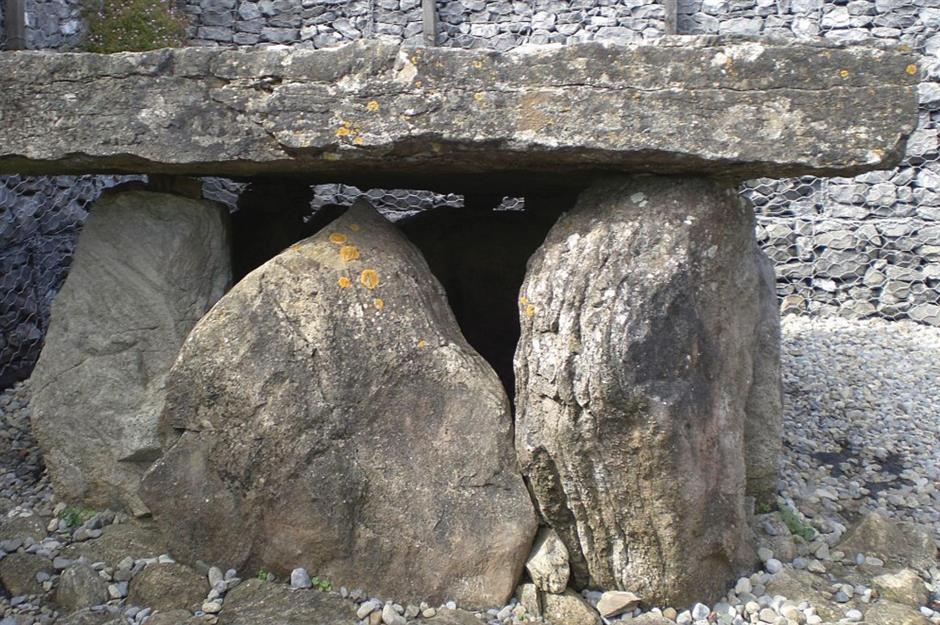
In 1837, the Irish antiquarian George Petrie designated Listoghil as Carrowmore 51. But in terms of size, it was number one of the Carrowmore group of tombs in County Sligo, 112 feet (34m) in diameter and ringed by 101 kerbstones, and among the oldest, dating to around 3500 BC. Its size and position led Petrie to speculate that this chief monument was “the sepulchre of the most distinguished person entombed in this great cemetery”, especially since the other burial mounds were arranged in a circle around, and even facing, Listoghil.
c3500 BC: Dolmens of the North Caucasus, Russia
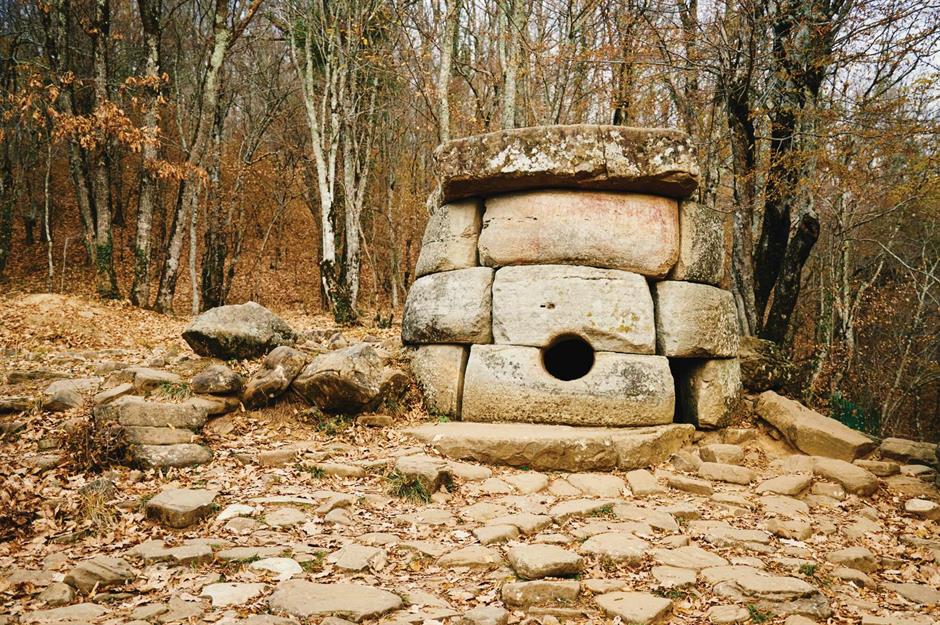
Across vast swathes of the Caucasus Mountains, it is possible to stumble upon one of the thousands of enigmatic stone houses that locals refer to as ‘ispun’, or ‘houses of dwarves’. They are a type of dolmen, or tomb, that were constructed by an unknown culture from around the mid-fourth millennium BC to the second. It was common for them to have a rounded window, similar to a ship’s porthole, but dolmens varied: they could be square or rounded, decorated with petroglyphs or bare, and may have been used for burial or worship.
3500 BC: Shahr-e Sokhta, Iran
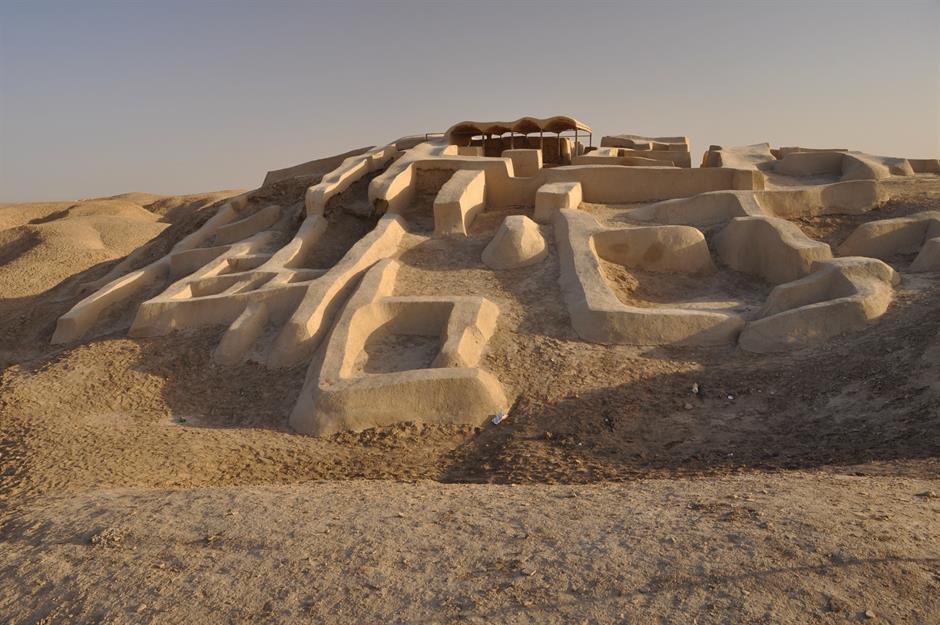
New findings announced in 2023 declared the ‘Burnt City’ was first settled in 3500 BC, a full 300 years earlier than previously thought. Situated at what was a junction in trade routes during the Bronze Age, it enjoyed four distinct periods of civilisation until being abandoned in 1800 BC – all of which ended in catastrophic fires, hence the name. At its prime, though, there is plenty of evidence that Shahr-e Sokhta cultivated advanced technologies, from architectural innovations with stone working to medical marvels like brain surgery and the world’s first artificial eyeball.
3600 BC: Megalithic Temples, Malta
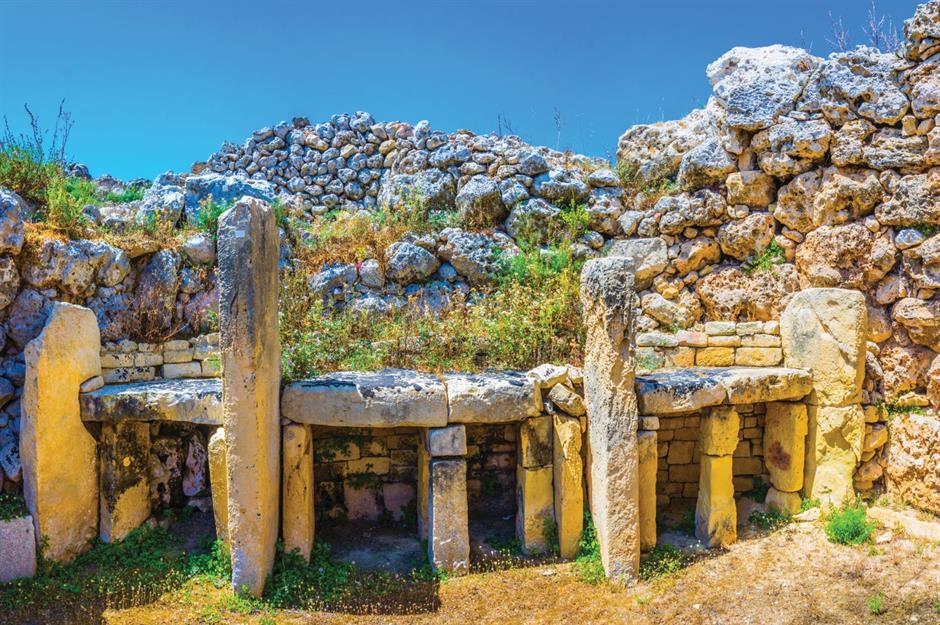
According to UNESCO, which has placed most of the Megalithic Temples of Malta on the World Heritage List, each structure is “a unique architectural masterpiece”. Built between 3600 and 2500 BC, all of the seven limestone temples are different in plan and construction method. Perhaps the best-known are the two monuments of Ggantija, who held the record as the oldest religious structures in the world until the discovery of Gobekli Tepe. The remains of carved figurines and animal bones suggest the temples were used for ceremonial purposes.
3600 BC: Sechin Bajo, Peru
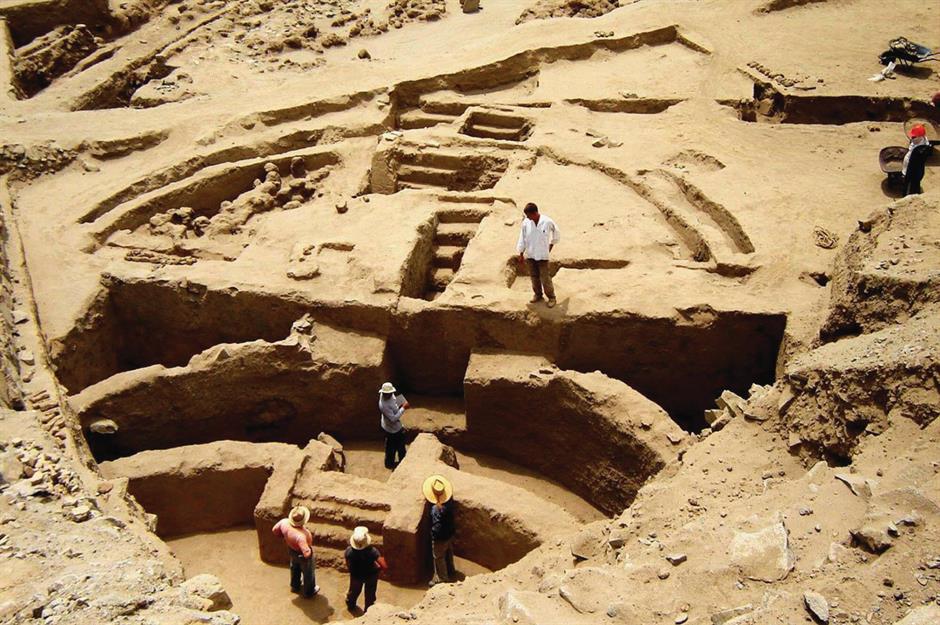
The Norte Chico civilisation may not be to thank for the oldest monumental architecture in the Americas as long thought, but a group of people close by in the Sechin and Casma valleys of Peru. German archaeologists have dated a circular plaza some 39 feet (12m) in diameter at Sechin Bajo to 3500 BC, and a clay frieze at the same settlement is a century older than that. Not far away is Sechin Alto, which features a colossal pyramid-like structure measuring 1,148 feet (350m) by 984 feet (300m) and reaching a height of 115 feet (35m).
3650 BC: West Kennet Long Barrow, England
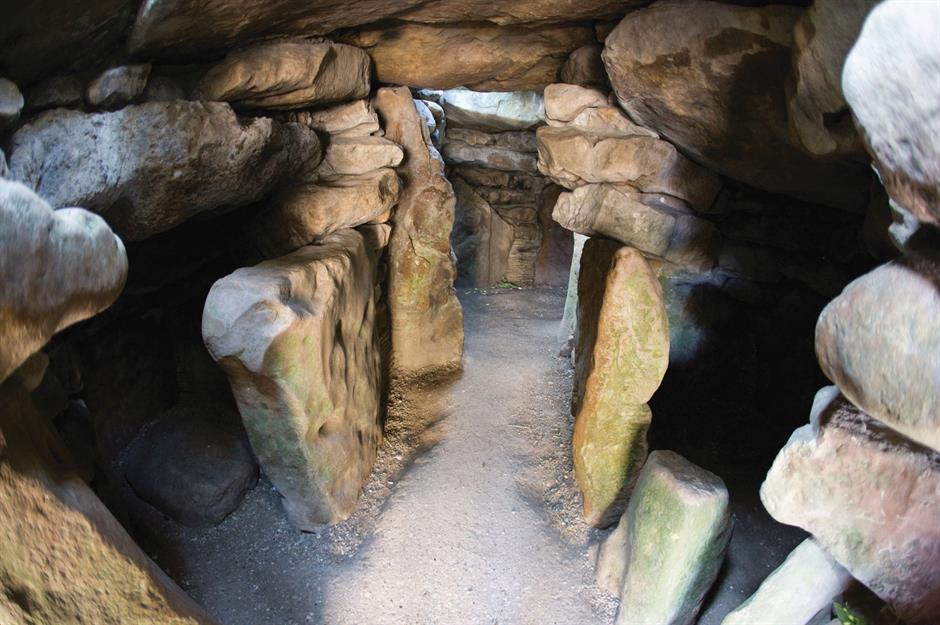
The oldest landmark of the UNESCO World Heritage Site that includes Stonehenge is not the world-famous stone circle itself, but a long barrow grave. Built around 3650 BC, West Kennet is also one of the largest Neolithic graves to have survived in Britain, reaching a length of 328 feet (100m). Inside, nearly 50 people were buried, as well as a host of grave goods including pottery, beads and tools, before the main passage was blocked off by boulders in around 2000 BC.
Check out the mysterious stone circles that are still baffling experts
3700 BC: Knap of Howar, Scotland
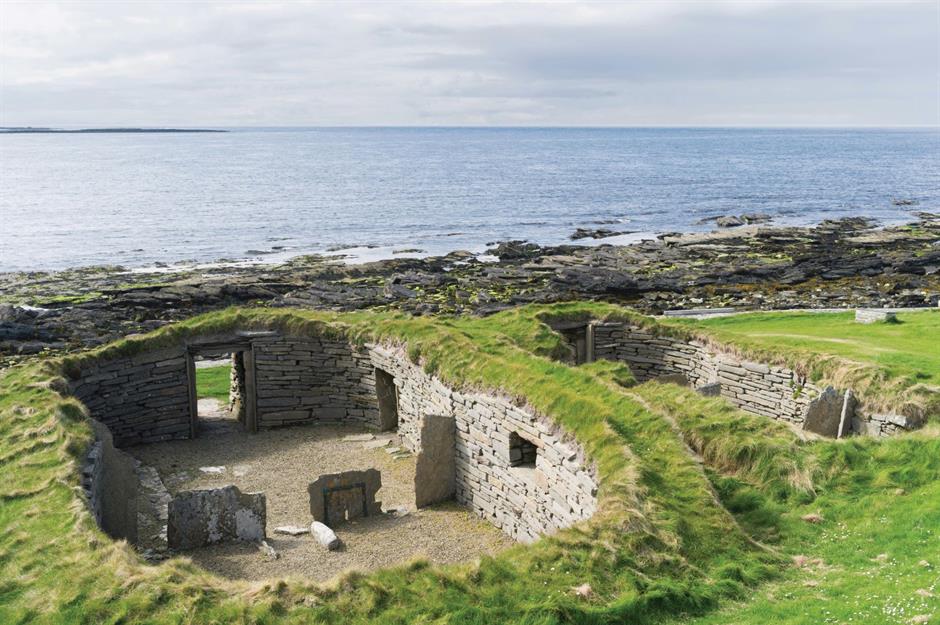
The Knap of Howar is a rather humble building compared to pyramids and ziggurats: two drystone buildings, complete with cupboards and a passageway between them, used as a dwelling on the island of Papa Westray, Orkney. It is known as ‘the farmstead’, with evidence of wheat and barley cultivation as well as fishing and the keeping of cattle, sheep and pigs. Yet its importance is in the fact it is still standing. Dating from around 3700 BC, the simple stoneworks are the oldest buildings in northwest Europe.
3750 BC: Dolmen de Menga, Spain
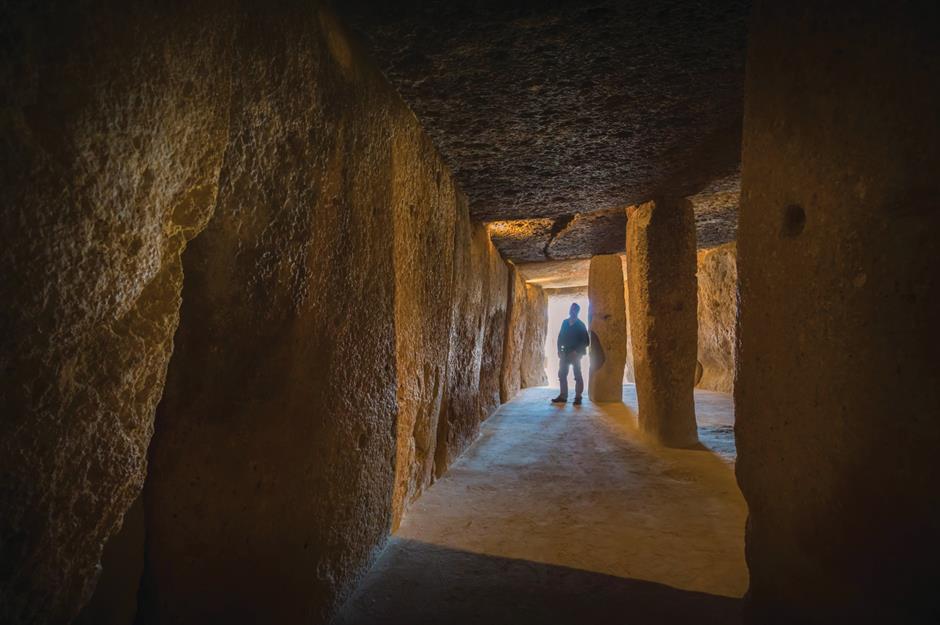
With a wide and high passageway held up by columns, Dolmen de Menga doesn’t look like a typical burial mound, with narrow entrances and space only to crawl. It is actually one of the largest structures of its kind in Europe: 90 feet (27.5m) in length and made from 32 colossal stones, the heaviest weighing around 180 tonnes. Dating to around 3750 BC, Dolmen de Menga is one of three megalithic tombs in this part of Andalusia, alongside Dolmen de Viera and Tholos de El Romeral.
c4000 BC: Monte d’Accoddi, Italy
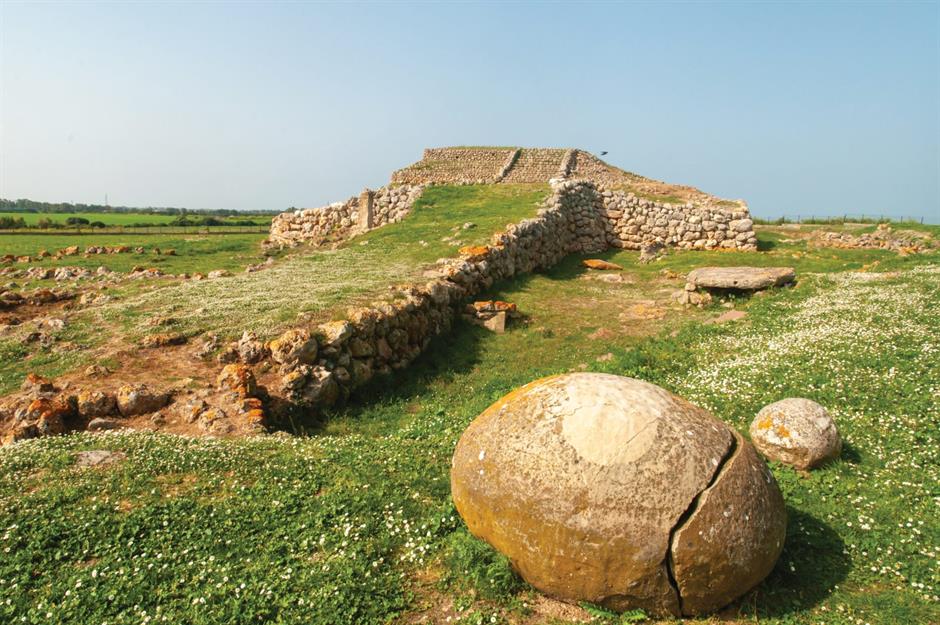
There is an ancient temple in Sardinia that resembles the ziggurats of Mesopotamia more than the structures seen in Europe. It consists of a platform more than 16 feet tall (5m) accessed by a ramp, which could have been used as an altar – maybe where animal sacrifices took place – or as a rudimentary step pyramid. The first stage of the temple dates to around 4000 BC and is attributed to the Ozieri culture, but most of what is seen today comes from later constructions by the Abealzu-Filigosa peoples, who enlarged everything so that Monte d’Accoddi now stands 33 feet (10m) tall.
c4000 BC: La Hougue Bie, Jersey
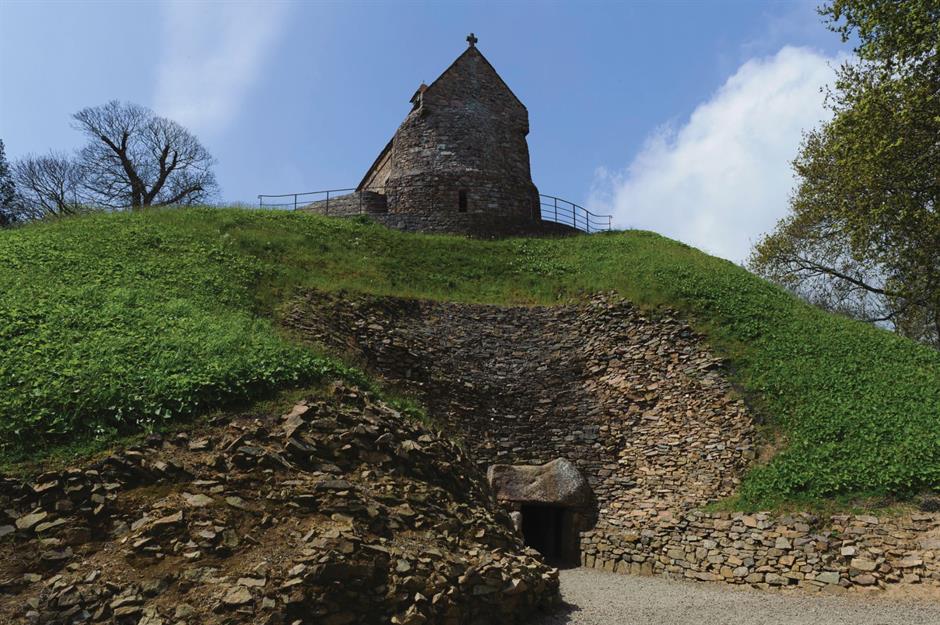
Jersey Heritage, which manages the site and associated museum, describes La Hougue Bie as one of the 10 oldest buildings in the world. The passage grave was perhaps in use – both for burials, and ceremonial and ritualistic purposes too – as early as 4000 BC. Today, visitors can explore a wide array of historical sights at the same time. Perched on top of the burial mound are 12th- and 16th-century Christian chapels, while a replica Neolithic longhouse and a German command bunker from the Second World War are a short walk away.
4500 BC: Cairn of Barnenez, France
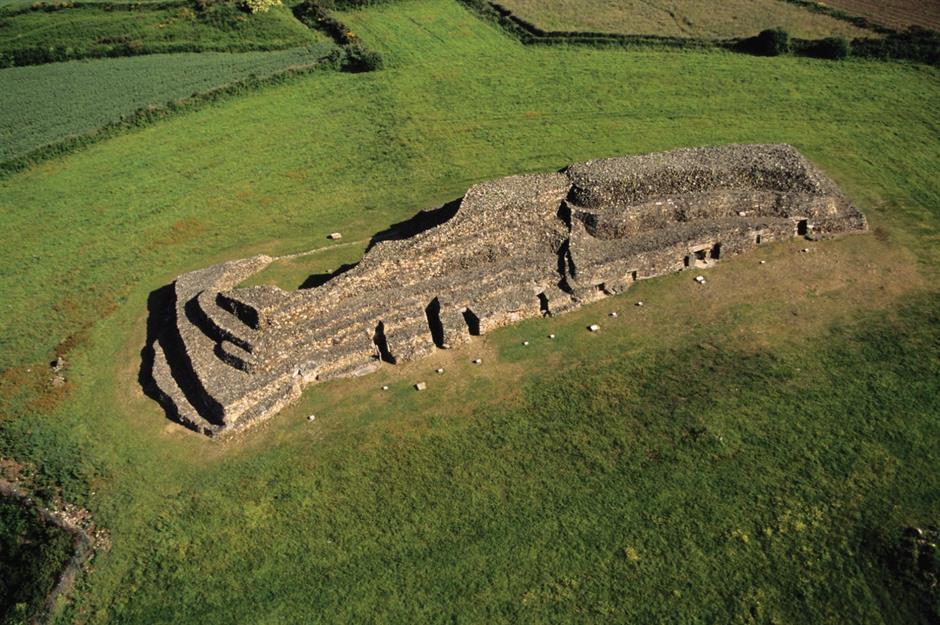
In a picturesque spot overlooking the Bay of Morlaix in northern Brittany, the Cairn of Barnenez is yet another megalithic monument in France that ranks highly in lists of the oldest structures in Europe. Construction on the 246-foot-long (75m) cairn began in the mid-fifth millennium BC and continued for centuries, resulting in 11 chambers inside. Having survived since Neolithic times, however, it nearly didn’t make it through the 1950s when the open passageway started being used as a makeshift quarry until some of the inner sanctums were unearthed.
4800 BC: Tumulus of Bougon, France
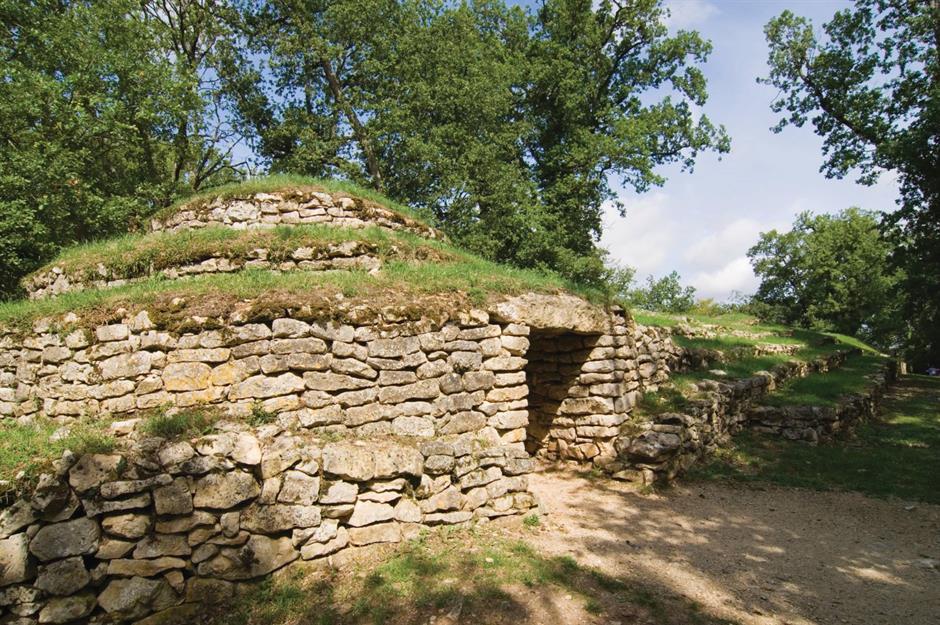
Tumulus E may not be the most imaginative of names, but it refers to the oldest in a group of earth-and-stone barrows in the Nouvelle Aquitaine region of western France, known as the ‘Necropolis of Bougon’. It dates to 4800 BC, initially formed of two chambers before they were joined over time. Each of the Bougon tombs has its own architectural style, from Tumulus E’s double chambers to the stepped mound of Tumulus A. The largest, Tumulus F, is 236 feet long (72m) and covered with a single stone slab that weighs 32 tonnes.
c5000 BC: Uruk, Iraq
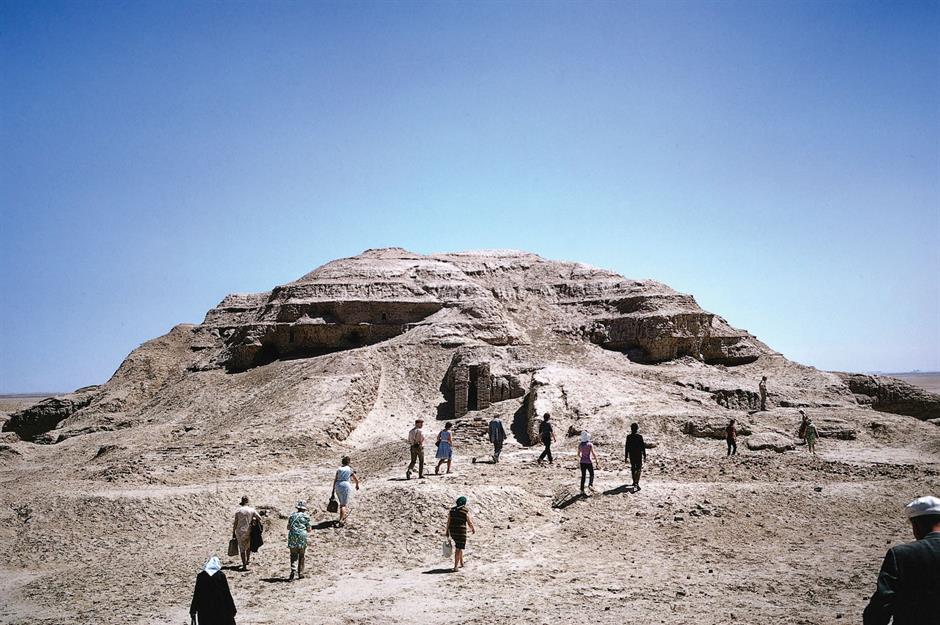
Much of the story of Uruk, once the largest city in the world with an estimated 40,000 residents, is wrapped up in legend. The mighty walls were erected by the hero of Mesopotamian mythology Gilgamesh and, according to the Sumerian King List, the city was founded by King Enmerker around the turn of the third millennium BC. But excavations have provided evidence of settlement as early as 5000 BC. As well as the stunning art and sculptures that survived, Uruk, or Erech, is credited as the birthplace of writing after tablets were found covered in pictographic precursors of cuneiform, one of the oldest known forms of writing.
5000 BC: Perperikon, Bulgaria
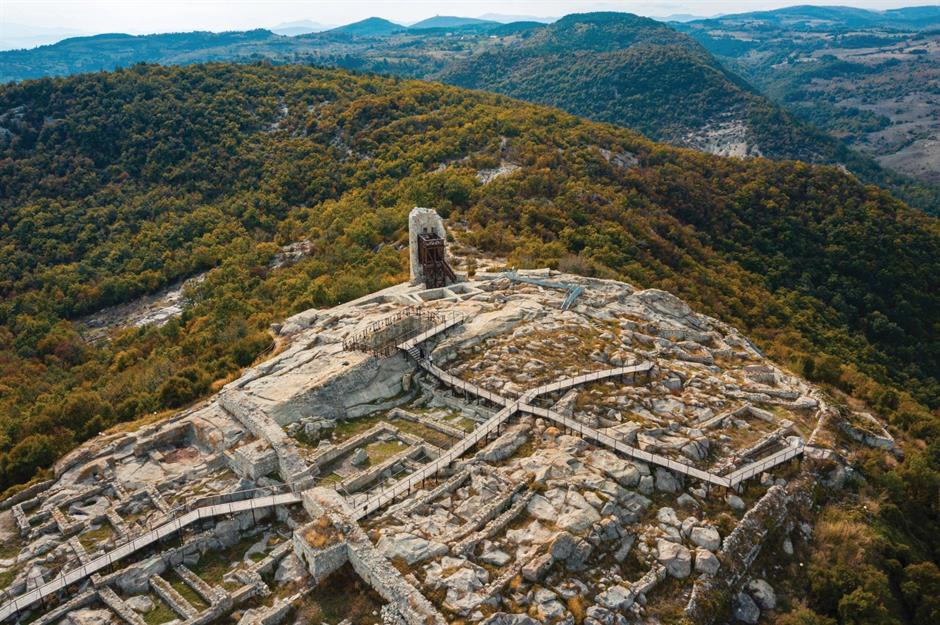
Since excavations got going in the 21st century – led by the so-called ‘Bulgarian Indiana Jones’, Nikolay Ovcharov – interest in Perperikon has focused on its Thracian chapter; Indo-Europeans who flourished in the second millennium BC and built a sanctuary on the rocky outcrop of the Rhodope Mountains. Yet the history of the site goes back much further, having been inhabited since 5000 BC and used as a place of religious ritual throughout the Bronze Age. It was at this time that a large oval hall was added with a circular altar at its centre.
c7000 BC: Khirokitia, Cyprus
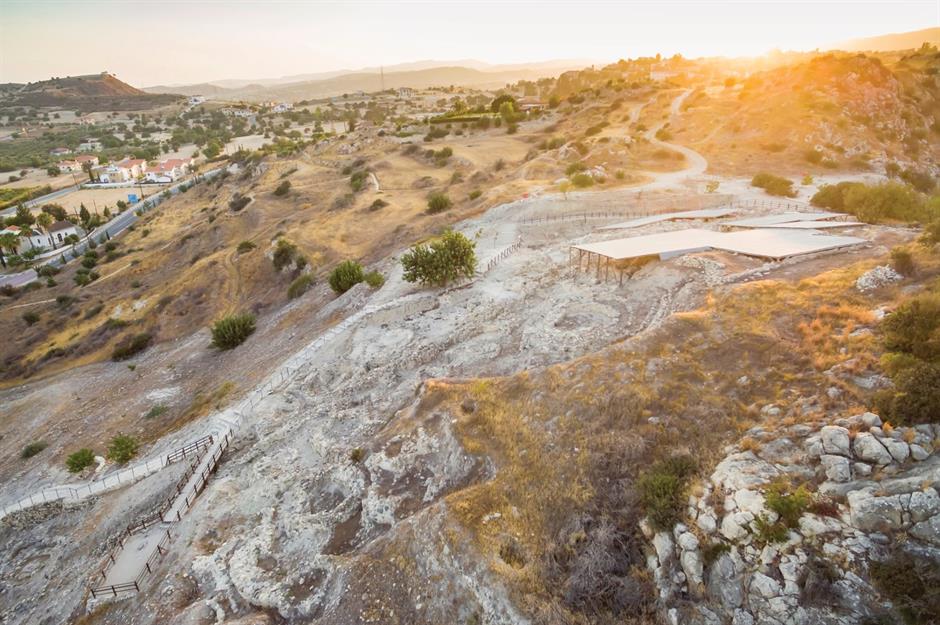
On the slopes of a hill on the Mediterranean island of Cyprus, this Neolithic site was occupied as early as the turn of the seventh millennium BC until the fourth. The houses there were circular with flat roofs and protected by outer walls, but the most intriguing feature of the settlement were the surrounding fortifications, as they suggest that the people of Khirokitia considered themselves a single community. Today, visitors can explore a number of reconstructed dwellings that had been made using the same methods as the original builders nine millennia earlier.
7000 BC: Mehrgarh, Pakistan
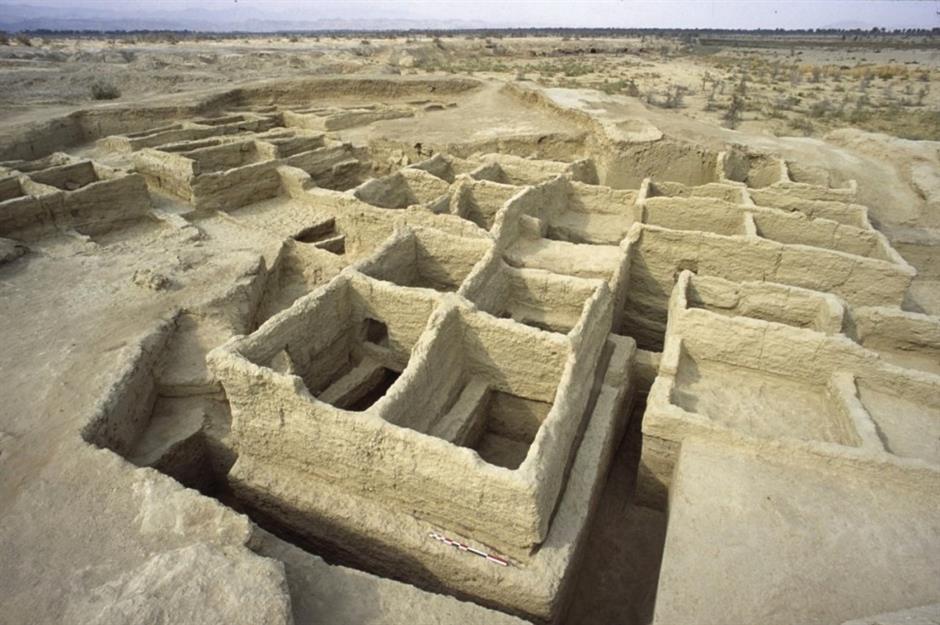
Mehrgarh, located on the Kacchi Plain in modern-day Pakistan, could be part of the Indus Valley Civilisation – among the world’s three earliest civilisations, alongside Mesopotamia and Egypt. First occupied around 7000 BC, it is the earliest-known Neolithic site in the region, from a time without pottery so structures were made from mud bricks and tools from copper ore. It was discovered in 1974 by French husband-and-wife pair, Jean-Francois and Catherine Jarrige, and the excavations since have revealed six mounds covering nearly 500 hectares and, to date, yielded in excess of 30,000 artefacts.
7400 BC: Catalhoyuk, Turkey
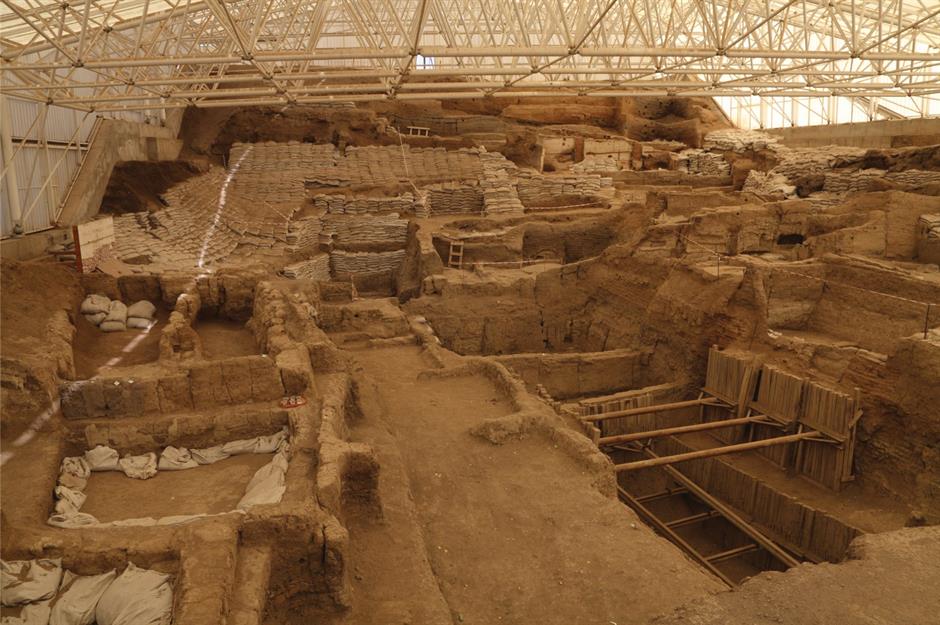
Another of the world’s oldest sites can be found in Turkey: Catalhoyuk, made up of two mounds overlooking the Konya Plain, underneath which is a complex mishmash of settlements built on top of each other going back to the mid-eighth millennium BC. Home to between 5,000 and 8,000 people at its height, Catalhoyuk was so tightly packed with mud brick abodes that there were no streets and inhabitants entered through holes in the rooftops. The ruins are an important monument to when humans started banding together in communities and moved away from their nomadic heritage.
c8000 BC: Tower of Jericho, Palestine
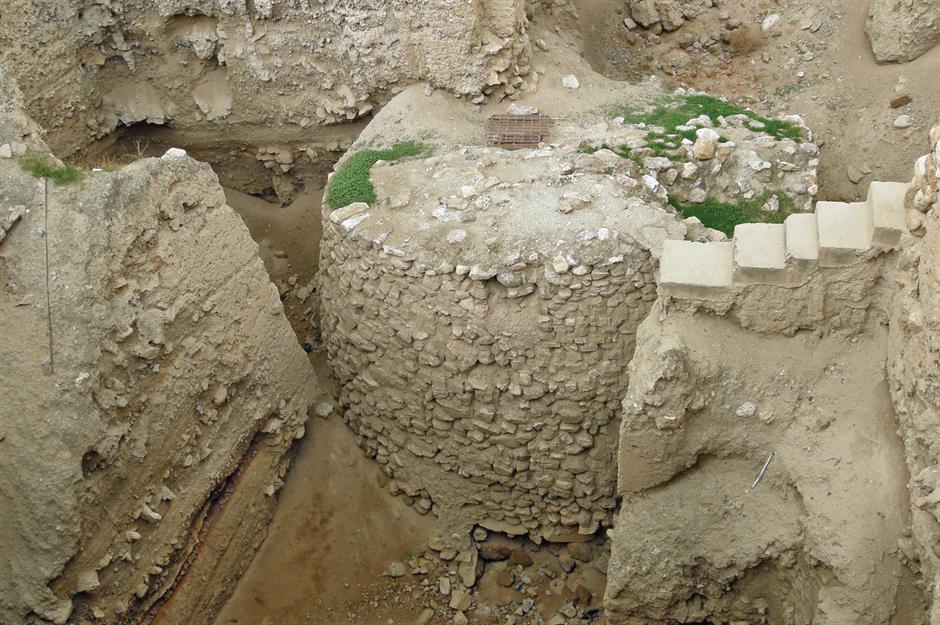
Tell es-Sultan in Palestine became a UNESCO World Heritage Site in 2023, deemed to be the 'oldest fortified city in the world'. The ruins near the city of Jericho had been inhabited as early as the ninth millennium BC, and it wasn’t long before a colossal wall had been constructed, which featured a stone tower. After being unearthed in the 1950s by British archaeologist Kathleen Kenyon, the Tower of Jericho was found to be 28 feet tall (8.5m), with walls over 3.2 feet (1m) thick and 22 steps inside.
9600 BC: Gobekli Tepe, Turkey
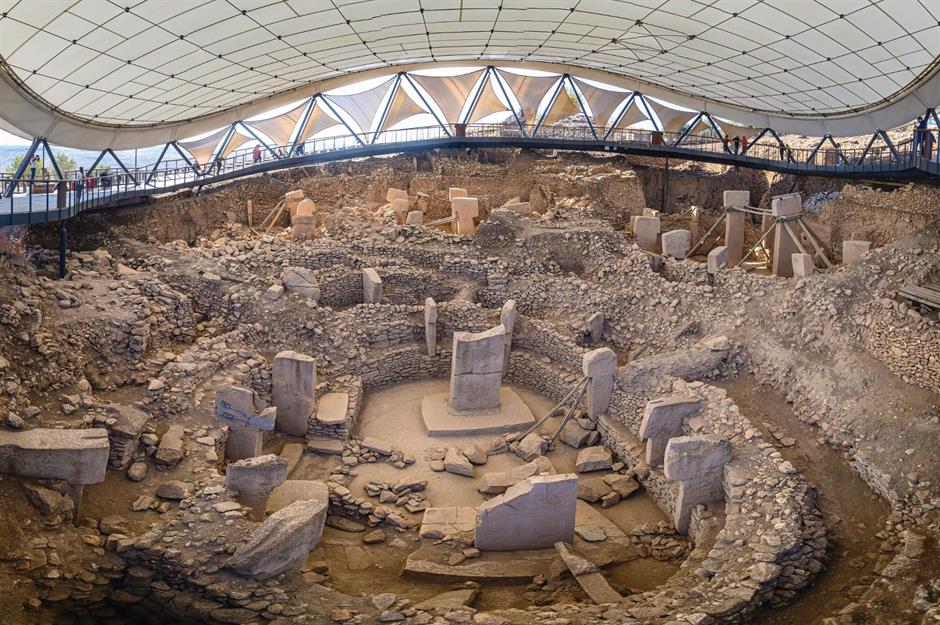
Referred to as the ‘world’s oldest temple’, the circular structures and megaliths of Gobekli Tepe in southeastern Turkey, near the Syrian border, were erected by hunter-gatherers between 9600 and 8200 BC. Dozens of T-shaped pillars as tall as 16 feet (5m) and weighing 10 tonnes were dragged into place on the limestone plateau, lifted to form enclosures, and carved with human figurines and animals. But since excavations began in the 1990s, led by German archaeologist Klaus Schmidt, it remains uncertain whether Gobekli Tepe was a permanent settlement, or intended solely for ritualistic practices.
Now check out the world's oldest man-made structures still in use today
Comments
Be the first to comment
Do you want to comment on this article? You need to be signed in for this feature